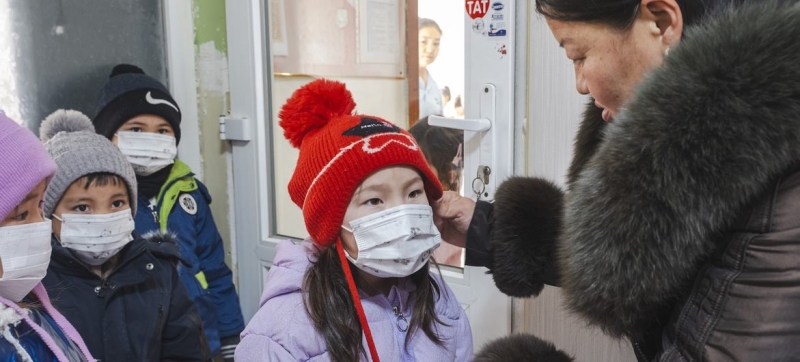
A kindergarten teacher in Mongolia puts masks on children before going for a walk. UNICEF: Health of millions of children in East Asia and the Pacific threatened by air pollution Climate and environment
Every day, more than 100 children under the age of five die in East Asia and the Pacific Islands due to air pollution, the United Nations Children’s Fund (UNICEF) warns, calling for urgent action.
The study highlights the devastating impact of toxic air on children, with air pollution linked to nearly one in four deaths of children under five in the region.
Exposure to air pollution begins in the womb, increasing the risk of preterm birth and low birth weight, and continues into childhood, worsening a child’s respiratory health, reducing cognitive function and contributing to chronic diseases such as asthma and cardiovascular disease.
“Every breath counts”
“Every breath counts, but for many children, every breath can cause harm,” said June Kunugi, UNICEF Regional Director for East Asia and the Pacific.
Read also:
UN report: Air pollution threatens people and nature in Europe and North America
The report notes that all 500 million children in the region live in countries with polluted air. More than 325 million children are exposed to annual levels of fine particulate matter (PM2.5) that are five times or more above World Health Organization (WHO) guidelines, and 373 million children live in areas with dangerous levels of nitrogen dioxide, a gas emitted by transport and industry.
PM2.5 air pollution is mainly caused by the burning of fossil fuels, biomass and agricultural waste – major contributors to climate change.
UNICEF warns that as extreme weather events intensify due to climate change, air pollution will become an even greater threat.
Far-reaching consequences
The air pollution crisis affects more than just children’s health. High pollution levels force schools to close, disrupt education, and increase health care costs, putting additional strain on health systems.
The World Bank estimates that PM2.5 air pollution cost East Asia and the Pacific $2.5 trillion in 2019, equivalent to 9.3 percent of the region’s gross domestic product (GDP).
Urgent call to action
In response to this threat, UNICEF has called on governments, businesses, health workers, parents and educators to take immediate action to reduce air pollution and protect children’s health.
Governments must tighten environmental regulations, switch to clean energy sources and introduce air quality standards that meet WHO recommendations. Businesses need to adopt clean technologies, reduce emissions and prioritise child safety.
Parents and educators also play a key role in advocating for children’s right to clean air and engaging young people in environmental initiatives, UNICEF says.
Effective Solutions
UNICEF works with governments, businesses and communities on a range of initiatives to reduce children’s exposure to air pollution.
These measures include stronger environmental regulations, better air quality monitoring through the installation of accessible sensors, and programmes to reduce air pollution in homes, including the introduction of cleaner cookstoves and improved ventilation.
The agency works to strengthen health systems to better diagnose and treat pollution-related illnesses, and supports young people in their efforts to become advocates for clean air.
